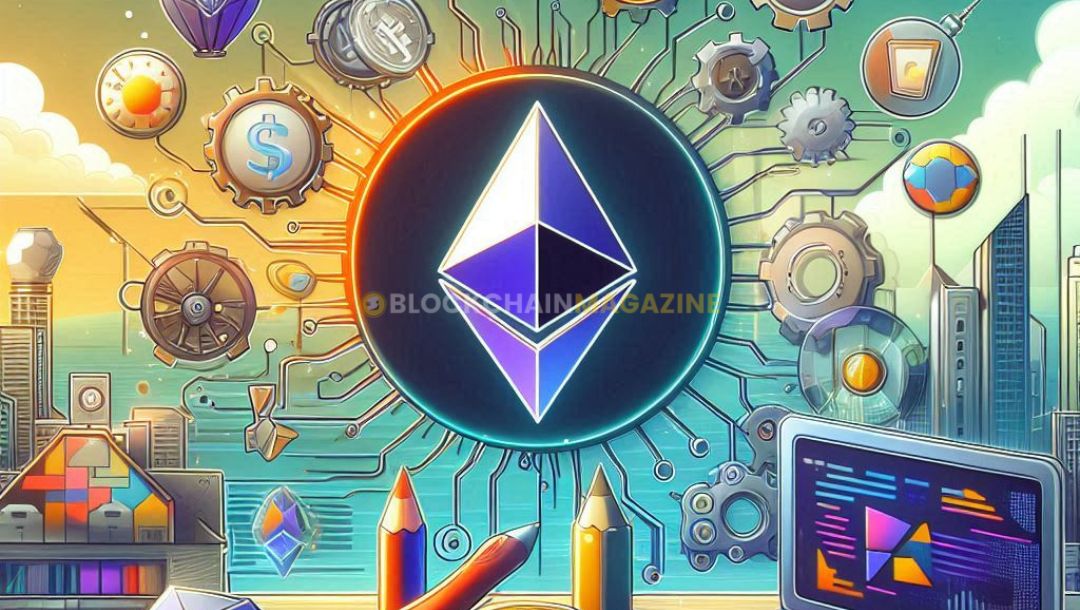Best Ethereum Developer Tools for Building Web3 Applications in 2024
As we move into 2024, the world of Web3 development is growing rapidly. Developers need the best tools to create decentralized applications (dApps) that are safe, efficient, and easy to use. This article will highlight the top Ethereum developer tools that can help you build amazing Web3 applications this year.
Key Takeaways
- Choosing the right tools is vital for building secure and scalable dApps.
- Hardhat and Truffle Suite are powerful frameworks for developing smart contracts.
- IPFS provides a decentralized way to store and share data, making it more secure.
- Web3.js and Ethers.js are essential libraries for interacting with Ethereum.
- The Graph helps developers organize and access blockchain data more easily.
Best Ethereum developer tools for building Web3 applications:
1. Hardhat
Hardhat is a powerful development environment specifically designed for Ethereum. It allows developers to build, test, and deploy smart contracts efficiently. With its extensive plugins and debugging tools, Hardhat makes the development process smoother.
Key Features:
- Flexible Framework: Easily integrates with other libraries.
- Debugging Tools: Helps identify and fix issues quickly.
- Plugin Support: Extend functionality with various plugins.
Why Choose Hardhat?
- User-Friendly: Great for both beginners and experienced developers.
- Community Support: A strong community that shares resources and knowledge.
- Scalability: Suitable for projects of all sizes.
Hardhat is essential for anyone looking to create robust Ethereum applications. It simplifies the development process and enhances productivity.
In 2024, as the demand for skilled developers rises, tools like Hardhat will be crucial. For instance, developers in the U.S. can expect salaries around $155,000, reflecting the growing need for expertise in this area.
| Feature | Description |
|---|---|
| Development Speed | Fast compilation and deployment |
| Testing | Built-in testing framework |
| Documentation | Comprehensive guides and tutorials |
2. Truffle Suite
Truffle Suite is one of the most popular tools for developing decentralized applications, especially on Ethereum. It provides a complete environment for building, testing, and deploying smart contracts. Here are some key features of Truffle Suite:
- Development Framework: Truffle is a powerful framework that simplifies the process of creating Ethereum applications.
- Testing Tools: It includes tools for testing smart contracts, ensuring they work as expected before deployment.
- Deployment Management: Truffle helps manage the deployment of contracts to the Ethereum network.
Key Components of Truffle Suite
| Component | Description |
|---|---|
| Truffle | Main framework for development and testing. |
| Ganache | Personal blockchain for Ethereum development. |
| Drizzle | Front-end library for building user interfaces. |
Truffle Suite makes it easier for developers to focus on building their applications without worrying about the underlying complexities of blockchain technology.
Why Choose Truffle Suite?
- User-Friendly: It has a simple interface that is easy to navigate.
- Comprehensive Documentation: Truffle provides extensive guides and resources for developers.
- Community Support: A large community means more resources and help available.
In summary, Truffle Suite is a must-have tool for anyone looking to develop Ethereum applications efficiently and effectively. Its features and community support make it a top choice for developers in 2024.
3. Remix IDE
Remix IDE is a powerful tool for developing smart contracts on Ethereum. It is designed for users at every skill level and requires no setup, making it accessible for beginners and experts alike. This web-based IDE provides a complete environment for writing, testing, and debugging smart contracts.
Key Features:
- User-Friendly Interface: The layout is intuitive, allowing developers to focus on coding without distractions.
- Built-in Testing: Remix includes a test blockchain VM, enabling developers to test their contracts in a safe environment.
- Static Analysis: It offers tools for static analysis to help identify potential issues in the code before deployment.
Benefits of Using Remix IDE:
- Fast Development: With no setup required, developers can start coding immediately.
- Integration Testing: It comes packed with tools for integration testing, ensuring that all parts of the contract work together smoothly.
- Community Support: A large community of users contributes to a wealth of resources and plugins, enhancing the IDE’s capabilities.
Remix IDE is used for the entire journey of smart contract development by users at every knowledge level.
In summary, Remix IDE is an essential tool for anyone looking to build on Ethereum, providing a comprehensive suite of features that streamline the development process.
4. IPFS
IPFS, or the InterPlanetary File System, is a revolutionary way to store and share files on the Internet. Unlike traditional methods that rely on a single server, IPFS uses a distributed network of nodes. This means that your data is spread out, making it safer and more reliable.
Key Features of IPFS:
- Decentralized Storage: Files are stored across many locations, reducing the risk of data loss.
- Censorship Resistance: It’s harder to block or remove content since it’s not on one server.
- Efficient File Sharing: Files can be accessed quickly from multiple nodes.
Benefits of Using IPFS:
- Enhanced Security: Data is less vulnerable to attacks.
- Improved Accessibility: Users can access files from anywhere.
- Cost-Effective: Reduces hosting costs by using a peer-to-peer network.
IPFS is a game-changer for developers looking to build decentralized applications. It provides a way to store and share files securely and efficiently, making it an essential tool in the Web3 toolkit.
In summary, IPFS is a powerful tool for developers aiming to create decentralized applications. Its peer-to-peer network ensures that data is distributed, enhancing security and accessibility. As we move into 2024, utilizing IPFS will be crucial for anyone looking to build in the Web3 space.
5. Solidity Development Tools
Solidity is the most popular language for writing smart contracts on Ethereum. Developers have a variety of tools to help them create, test, and deploy their contracts effectively. Here are some essential tools:
Integrated Development Environments (IDEs)
- Remix IDE: A web-based IDE that offers built-in static analysis and a test blockchain.
- Visual Studio Code: With extensions like Solidity and Hardhat, it enhances the development experience.
- IntelliJ Solidity Plugin: Provides syntax highlighting and code completion for Solidity.
Other Useful Tools
- Truffle: A comprehensive framework for developing, testing, and deploying smart contracts.
- Foundry: A toolchain that manages dependencies and runs tests for smart contracts.
- OpenZeppelin: Offers a suite of tools for developing secure smart contracts.
Key Features of Solidity Development Tools
| Tool Name | Key Features |
|---|---|
| Remix IDE | Web-based, static analysis, test blockchain |
| Truffle | Full development framework, testing, deployment |
| Foundry | Command-line toolchain, dependency management |
In 2024, having the right tools is crucial for any developer. These tools not only simplify the development process but also ensure that your smart contracts are secure and efficient.
Remember, becoming a web3 developer requires a solid foundation in blockchain technology and expertise in programming languages like Solidity and JavaScript.
By utilizing these tools, developers can create robust decentralized applications that meet the demands of the evolving Web3 landscape.
6. Web3.js
Web3.js is a popular JavaScript library that allows developers to interact with the Ethereum blockchain. It simplifies the process of building decentralized applications (DApps) by providing a set of tools to connect to the Ethereum network.
Key Features of Web3.js
- Easy Integration: Web3.js makes it simple to connect your application to the Ethereum blockchain.
- Rich Functionality: It offers a wide range of functions for managing accounts, sending transactions, and interacting with smart contracts.
- Community Support: Being widely used, it has a large community that contributes to its development and provides support.
Comparison with Alternatives
| Feature | Web3.js | Ethers.js | Eth.js |
|---|---|---|---|
| Language | JavaScript | JavaScript | JavaScript |
| Type Safety | No | Yes | No |
| Wallet Support | Basic | Advanced | Basic |
Web3.js is essential for developers looking to create user-friendly DApps that interact seamlessly with the Ethereum blockchain.
In summary, Web3.js is a powerful tool for anyone interested in building on Ethereum. It provides the necessary features to create robust applications while being supported by a vibrant community. Whether you’re a beginner or an experienced developer, Web3.js can help you navigate the complexities of blockchain development.
7. Ethers.js
Ethers.js is a powerful JavaScript library that makes it easier to interact with the Ethereum blockchain. It provides a simple and efficient way to work with Ethereum smart contracts and wallets. This library is especially useful for developers looking to build decentralized applications (dApps) without getting bogged down in complex code.
Key Features:
- User-Friendly: Ethers.js is designed to be easy to use, making it accessible for both beginners and experienced developers.
- Wallet Support: It includes built-in wallet features, allowing developers to manage accounts and sign transactions seamlessly.
- Utilities: The library offers various utilities for tasks like encoding and decoding data, which simplifies the development process.
Why Choose Ethers.js?
- Lightweight: Ethers.js is smaller in size compared to other libraries, which helps in faster loading times for applications.
- TypeScript Support: It has excellent TypeScript support, making it a great choice for developers who prefer type safety.
- Active Community: The library has a vibrant community, ensuring regular updates and support.
Ethers.js stands out as a top choice for developers aiming to create efficient and user-friendly Ethereum applications. Its combination of simplicity and powerful features makes it a go-to tool in the Web3 ecosystem.
In summary, Ethers.js is a versatile library that enhances the development experience for Ethereum applications, making it easier to connect with the blockchain and manage transactions effectively. Its lightweight design and user-friendly features make it a valuable tool for any developer in the Web3 space.
8. Alchemy
Alchemy is a powerful platform that helps developers build Web3 applications more easily. It combines various tools and resources to support developers in their projects. Here are some key features of Alchemy:
- Supernode: A reliable web3 engine that enhances performance.
- NFT API: Simplifies the creation and management of NFTs.
- Webhooks: Provides real-time notifications for events.
Key Benefits of Using Alchemy
- Speed: Transactions can be processed up to 7.9 times faster.
- Support: Alchemy offers legendary support to its users.
- Community: A strong community of developers to share knowledge and resources.
Alchemy is designed to help developers create amazing blockchain applications with ease and efficiency.
With its wide range of tools, Alchemy is a top choice for developers looking to innovate in the Web3 space. Whether you’re building a simple dApp or a complex blockchain solution, Alchemy provides the necessary support and infrastructure to succeed.
9. The Graph
The Graph is a powerful tool that helps developers access blockchain data easily. It allows you to build and publish open APIs, called subgraphs, that can query data from various blockchains. This makes it easier to create decentralized applications (dApps).
Key Features:
- Decentralized Data Access: The Graph enables developers to access data without relying on a single source.
- Subgraph Creation: Developers can create subgraphs to index specific data from the blockchain.
- Fast Queries: It allows for quick data retrieval, which is essential for responsive dApps.
Benefits of Using The Graph:
- Efficiency: Reduces the time needed to fetch data from the blockchain.
- Flexibility: Supports multiple blockchains, making it versatile for various projects.
- Community Support: A growing community contributes to its development and improvement.
The Graph is transforming how developers interact with blockchain data, making it more accessible and efficient.
Comparison Table of Data Access Tools
| Tool | Type | Speed | Decentralized |
|---|---|---|---|
| The Graph | API for dApps | Fast | Yes |
| Moralis | Backend Service | Moderate | No |
| Infura | API for Ethereum | Fast | No |
In summary, The Graph is a vital tool for developers looking to build efficient and scalable Web3 applications. Its ability to provide decentralized data access makes it a top choice for many in the Ethereum ecosystem.
10. Moralis
Moralis is a powerful platform that provides developers with essential tools for building Web3 applications. It offers enterprise-grade Web3 APIs and RPC nodes, making it easier to access all the crypto data you need in one place. This allows developers to focus on creating amazing user experiences without worrying about the underlying infrastructure.
Key Features of Moralis:
- Moralis Streams API: Stream real-time on-chain events to your webhook from multiple EVM blockchains.
- Rich Blockchain Data: Gain insights and delight your users with comprehensive blockchain data.
- User-Friendly Interface: Simplifies the development process, allowing for faster deployment of applications.
Benefits of Using Moralis:
- Speed: Quickly build and deploy applications without extensive backend setup.
- Scalability: Easily scale your applications as user demand grows.
- Support: Access to a community and resources that can help troubleshoot issues.
Moralis empowers developers to create innovative Web3 applications by providing all the necessary tools in one platform, making it a go-to choice for many in the industry.
Conclusion
In conclusion, as we move through 2024, the tools for Web3 development are more important than ever. The ten tools we’ve discussed are essential for anyone looking to create safe and effective decentralized applications. From powerful frameworks like Hardhat and Truffle Suite to vital services like Infura and IPFS, each tool plays a key role in the development journey. By mastering these tools, developers will be better prepared to face the challenges and seize the opportunities in the world of decentralized technology. Additionally, companies like RevInfotech are leading the way in using Web3 tools to innovate in fields like healthcare, helping organizations improve data security and meet regulations while providing excellent patient care.
Frequently Asked Questions
What are the essential tools for Web3 development in 2024?
In 2024, the right tools for Web3 development are very important. These tools help developers create safe and efficient decentralized applications (dApps). They include frameworks for building apps and platforms that offer strong support.
Why are Web3 development tools important?
Web3 tools are crucial because they help developers manage the complexities of blockchain technology. This ensures that the applications they create are secure and can handle growing demands.
How do these tools help improve security?
Web3 development tools often come with features that help find and fix problems early in the development process. This reduces the chances of security issues in the final applications.
Can beginners use Web3 development tools?
Yes! Many Web3 tools are designed to be user-friendly and come with helpful guides. Beginners can easily start using tools like Remix IDE to write and test their smart contracts.
What is the role of Ethereum in Web3 development?
Ethereum is a leading platform for building decentralized applications. It offers various frameworks that make it easier to develop, test, and deploy smart contracts.
What is IPFS and why is it useful?
IPFS stands for InterPlanetary File System. It is a way to store and share files across a network of computers. This makes it more reliable and resistant to censorship compared to traditional web hosting.
Stay informed with daily updates from Blockchain Magazine on Google News. Click here to follow us and mark as favorite: [Blockchain Magazine on Google News].
Get Blockchain Insights In Inbox
Stay ahead of the curve with expert analysis and market updates.
latest from tech
Disclaimer: Any post shared by a third-party agency are sponsored and Blockchain Magazine has no views on any such posts. The views and opinions expressed in this post are those of the clients and do not necessarily reflect the official policy or position of Blockchain Magazine. The information provided in this post is for informational purposes only and should not be considered as financial, investment, or professional advice. Blockchain Magazine does not endorse or promote any specific products, services, or companies mentioned in this posts. Readers are encouraged to conduct their own research and consult with a qualified professional before making any financial decisions. The featured image used is just a creative depiction of the title and it does not intend to hurt sentiments of any person or institution. If it hurts anyone sentiments, please do not hesitate to reach out to Blockchain Magazine.

 Bitcoin
Bitcoin  Ethereum
Ethereum  XRP
XRP  Tether
Tether  Solana
Solana  USDC
USDC  Dogecoin
Dogecoin  Cardano
Cardano  Lido Staked Ether
Lido Staked Ether  TRON
TRON  Wrapped Bitcoin
Wrapped Bitcoin  Chainlink
Chainlink  Wrapped stETH
Wrapped stETH  Sui
Sui  Avalanche
Avalanche  Stellar
Stellar  Shiba Inu
Shiba Inu  Hedera
Hedera  Toncoin
Toncoin  LEO Token
LEO Token  Hyperliquid
Hyperliquid  Bitget Token
Bitget Token  Litecoin
Litecoin  WETH
WETH  USDS
USDS  Polkadot
Polkadot  Bitcoin Cash
Bitcoin Cash  Ethena USDe
Ethena USDe  Wrapped eETH
Wrapped eETH  MANTRA
MANTRA  Uniswap
Uniswap  Pepe
Pepe  Ondo
Ondo  Monero
Monero  Aave
Aave  NEAR Protocol
NEAR Protocol  WhiteBIT Coin
WhiteBIT Coin  Mantle
Mantle  Official Trump
Official Trump  Aptos
Aptos  Dai
Dai  Internet Computer
Internet Computer  Ethereum Classic
Ethereum Classic  Bittensor
Bittensor  Cronos
Cronos  OKB
OKB  POL (ex-MATIC)
POL (ex-MATIC)  Gate
Gate 




